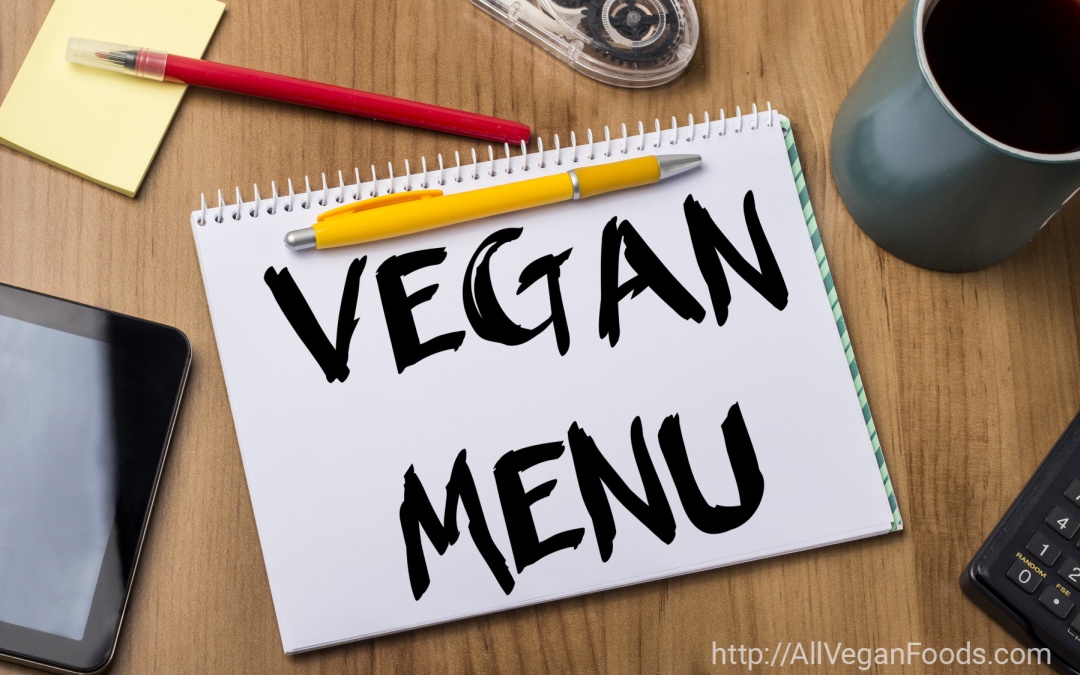Vegan Menu Plan Made Easy
A vegan menu plan doesn't have to be fancy or complicated. When I first transitioned to a vegan diet years ago, I tried following other people's menu plans. I bought programs and joined an online club that sent me weekly plans. But just as we are all unique, so is our approach to menu planning. I like easy ways to come up with my own vegan menu plan.
When you want to eat a healthy vegan diet, it's important always to have that kind of food in your fridge and food pantry. A vegan menu plan is a healthful way to stay on track and a bit different than making an omnivore menu plan. In three easy steps, I show you how to do exactly that.
Of course, there are also kind people out there that will do it for you. Some are free and some are paid. But as I said above, I like a vegan menu plan made easy. Many of the premade ones you find online are catering to someone else's taste buds. It can be enlightening for new foods, or frustrating if you don't like the menu plan – especially if you paid for it. I suggest getting a two or three favorite vegan cookbooks and make a vegan menu plan yourself.
Vegan menu plan: how to start
The First Step is to decide which starch and protein you want to build your meals around. Starches are important because they make you feel full and gives you the most needed plant fibers. You want your meals to be both hearty and satisfying.
Good sources of plant-based proteins are legumes and beans, quinoa, soy, nuts, and, of course, foods made from these ingredients. Good forms of starches are brown rice, beans, whole grain wheat or whole grain pasta, winter squash and potatoes, especially sweet potatoes.
The Second Step is the texture. Often meals with only one texture have a tendency to get bored fast. Not only boring meals but you will also not feel satisfied. When I talk texture I am talking about creamy, crunchy, smooth and firm. Whatever you decide to cook be sure to include at least two different textures per meal. An example: A regular green salad could transform into a hearty meal by adding firm baked tempeh, crunchy sesame seeds, creamy avocado, and smooth cashew dressing on top.
The Third Step is to upgrade the nutrient density. Which foods are nutrient dense? Leafy greens and cruciferous veggies are some of the most nutrient-dense foods you can add to your meals. Leafy greens are chard, collard greens, and kale. Cruciferous veggies are cabbage, broccoli, and radishes.
Here is how I did my last meal:
- I chose garbanzo beans / chickpeas as the starch / protein, then I thought about what to make of the beans. I love casseroles, so a garbanzo casserole it will be.
- Next to think of is the texture, a casserole will be smooth if I put coconut milk in, I will need something crisp, so I will top with a few raw slices of onion. Serve with bread with avocado spread for the crunchiness.
- To amplify the nutrient density I will serve, as a side boiled cauliflower.
So, I served a garbanzo bean casserole, with vegetables, topped with slices of red onion & a slice of bread with avocado spread with nutritional yeast on the side.
Below an Italian Garbanzo Bean Casserole Recipe
Ingredients: (serves 4)
- 1 large spaghetti squash, shredded
- 2 1/2 cups cooked chickpeas (500 grams)
- 1 medium zucchini, sliced (approx.16 slices)
- 1/2 cup sliced Kalamata black olives (100 grams)
- 3 large white mushrooms, sliced
Homemade Tomato Basil Sauce:
- 1 can No-Salt tomato sauce
- 1/4 cup chopped fresh basil (a handful)
- 1 teaspoon chopped garlic
- 1/2 teaspoon onion powder
- 1/4 teaspoon black pepper
- 1 Tablespoon dried parsley
Additional Toppings:
- 1 to 2 Tablespoon Nutritional Yeast
- 1 Tablespoon dried basil (for sprinkling on top)
Directions:
- Preheat the oven to 350°F / 175°C.
- Microwave the spaghetti squash for 5 minutes or until you can easily cut it and fork out the strands. Prepare the remaining of the vegetables and set everything aside.
- In a bowl mix all the sauce ingredients and give everything a good stir until smooth.
- In an 8×8″ / 20×20 cm casserole dish, assemble the casserole: Layer the bottom with the squash, next layer chickpeas, then zucchini, olives, mushrooms, and finally the sauce. Top the casserole with nutritional yeast and an extra sprinkle of basil.
- Put the casserole in the oven and bake for 25 minutes.

